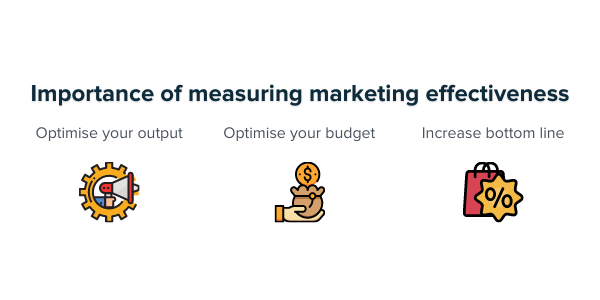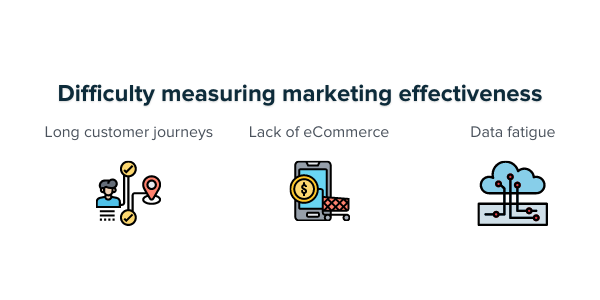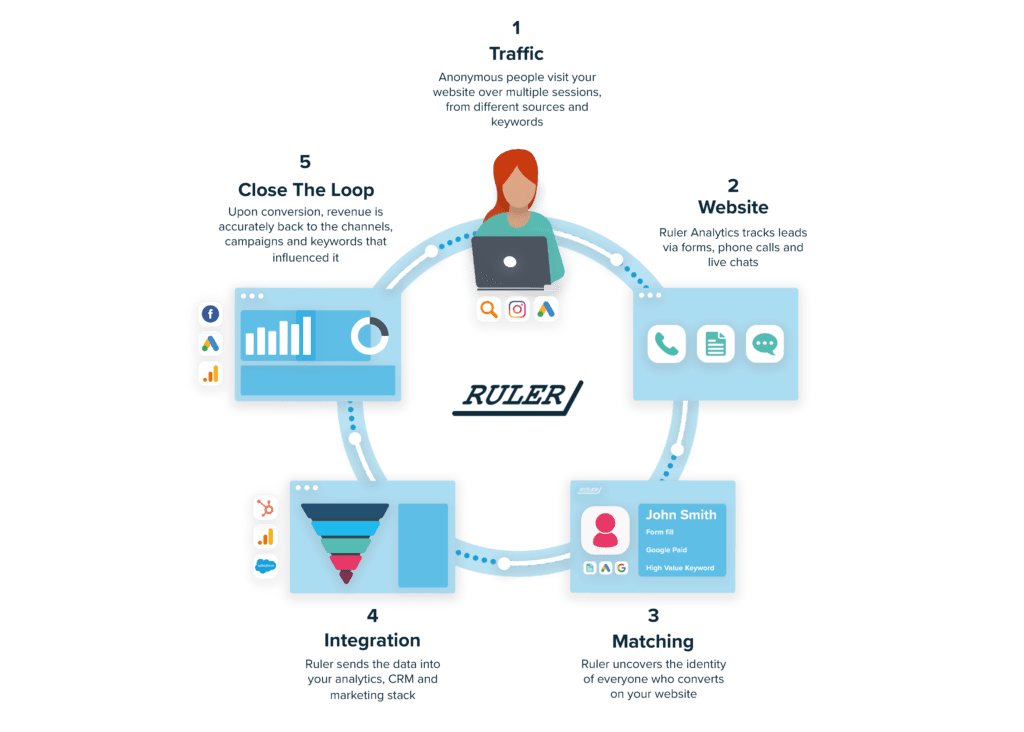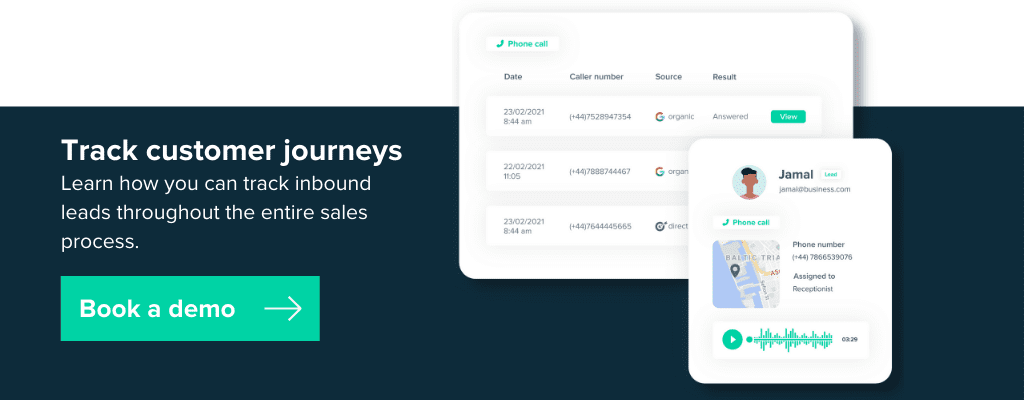With just 23% of marketers saying they know what KPIs to track, learning how to measure your marketing effectiveness is vital. We explore exactly how to do it in this blog.
Every company has some form of marketing in place. And when you have lots of content and campaigns going out across multiple channels, you’re left with an awful lot of data to sift through.
If you can measure your marketing effectiveness, however, you’ll be able to answer questions like:
With 37% of marketers stating generating high-quality leads is one of their biggest marketing challenges, there’s a clear issue at hand.
While most marketing analytics tools give some basic indication of what’s working in your marketing arsenal, a lot of the data is missing and disconnected.
But don’t worry, that’s where we come in.
Related: How to measure marketing with Ruler Analytics
We’re going to discuss:
Let’s get stuck in.
⚡️ Pro Tip
Remember, the best way to get solid marketing data is by linking your sales back to your marketing touchpoints.
Read how Ruler attributes closed revenue to your marketing activity.
Marketing effectiveness measures how well a company’s marketing efforts drive more revenue while decreasing costs. We found that 55% of marketers are tasked with the responsibility of increasing ROI and sales.
That’s the ultimate goal of marketers and businesses; to get more business for a lower investment.
Measuring and proving your digital marketing ROI is key to better understanding how your marketing is working to impact your bottom line.
Related: How to measure your digital marketing ROI
So how can you understand how marketing impacts your bottom line? Let’s find out.
There’s no doubt that measuring your marketing effectiveness is important. By understanding what’s working and what isn’t, you can:

With visibility on what is working and what’s not, you can spend time on what you know is working well and doing more of it.
Similarly, you can begin to learn what aspects of your marketing strategy need work.
Alongside optimising your time is optimising your budget. A marketing budget is tricky to get signed off on at the best of times.
But, with the right reporting tools in place, you can quickly identify which areas are driving high leads and high revenue. This makes asking for more budget a breeze.
Plus, it gives you room to explore new initiatives too. Given you can quickly see the impact of your marketing efforts, you’ll be able to try new channels and campaigns and see if they’re having the appropriate impact.
With the data you need at your fingertips, you can work on driving more high-quality leads and sales. With that, you’ll be able to create a marketing machine that can consistently drive revenue.
And you know what that means? A healthy influx of sales will help you grow and expand your team, your budget and your impact.
Measuring your marketing effectiveness shouldn’t be difficult, and yet, 40% of marketers stated that more accurate data would improve their marketing outputs. So what’s going on?
We’ve got difficulty measuring marketing effectiveness down to these key reasons:

Not every marketer has the luxury of an eCommerce business where revenue can be tied up into Google Analytics.
High-value eCommerce and B2B can often only drive leads, not sales, through their websites
These leads are often comparing lots of different products and solutions, or need to get sign-off for big-budget tools or products.
This results in leads sitting in your pipeline for longer and more nurturing via more channels to get them over the line.
What comes with this is conversion types like form fills, phone calls and live chat. Each of these has its own issues. The first is difficulty tracking them. The second is difficulty attributing them back to a marketing channel. And third is understanding if that lead progresses into a sale.
Users don’t click on your website and convert right away. Customer journeys are getting longer and longer. With that comes more and more data for you to track.
And while you’re probably already struggling to track conversions, how do you even begin to understand these as part of a full customer journey?
Your data is disconnected between your website, your CRM and your analytics tools. But it’s not impossible to reconnect them.
Related: How to view full customer journeys with Ruler Analytics
With all of these leads, channels, campaigns and touchpoints to track, there’s no doubt you’re feeling data fatigue.
Where do you begin when it comes to looking at your data and understanding what data is important, and what isn’t?
So we know what marketing effectiveness is, plus why it’s important but hard to track.
Let’s get stuck into the best ways to get the data you need to measure your marketing effectiveness and use those insights to make data-driven decisions.
Leads are the fuel for your sales team, so it makes sense to start there.
How many leads are being generated each month? But more importantly, which marketing channels and campaigns are driving the most leads?
If you don’t know the answer to that, then that’s the first thing you need to do.
🚀 Pro Tip
Not sure where to start when it comes to tracking the source of your leads? Read our complete guide to lead tracking and lead generation to see how you can get the data you need, where you need it most.
Once you have a better understanding of that, then you need to branch out even further.
You should then be tracking how much revenue your marketing generates. This is the most solid way to determine how effective your marketing actually is.
With revenue as a marketing metric, you can definitively track, evidence and optimise your outputs with one singular actionable and measurable metric.
✏️ Note
Learn how Ruler can attribute closed revenue back to your marketing channels and campaigns
Vanity metrics are great, but they’re not going to tell you much about your marketing’s impact. They’re great at highlighting the potential of your marketing, but that’s about it. How much does a follow on social really mean if that follower doesn’t convert into revenue?
But with revenue and lead generation leading the way, you can then add in other important metrics:
The best way to measure your marketing is by how much return you get on your investment.
Related: How to calculate and track your digital ROI
ROI helps you qualify your marketing performance as you can see how much bang you’re driving for your buck. If your return on investment is high, you know that your marketing is working well to drive really qualified leads. But, if it’s low, then you need to look at the channels, campaigns and ads you’re using and optimise them for better performance.
✏️ Note
Remember, Ruler is a marketing attribution tool and it can break down your revenue on a channel, campaign, ad and even keyword level.
Plus, since we integrate with analytics tools like Google Ads and Google Analytics, you’ll also be able to see these figures accurately in those platforms too. Read more on how Ruler works here.
Customer acquisition cost, or CAC, is the cost it takes to obtain a new customer.
Related: How to reduce your CAC
This is a great stat to use when you measure your marketing as you can break down your marketing success to understand the actual cost you’re putting in to drive more business. Once you know how much you’re spending on average to get new customers, you can get cutthroat with your marketing to optimise it further and pinpoint what really works.
Another key stat to pay notice of is cost per lead. This is another great metric to use when it comes to measuring your marketing. However, it does have its limitations.
When used without a tool like Ruler, it’s highly unreliable. Firstly, are you even sure you’re accurately tracking all of your conversions?
It’s not easy to track conversions via call or live chat. And while it’s possible to track form submissions, it’s still an arbitrary figure on its own.
Lead value is a great metric for a range of businesses. It’s a number that ties your marketing to potential sales and allows you to understand if your marketing is driving:
With this knowledge, you’ll be able to focus on your marketing efforts that are driving high-quantity, high-quality and high-cost leads.
Customer lifetime value is very similar to lead value but it focuses on how much revenue one customer can potentially provide over the lifetime. Salespeople tend to focus on this metric as it means more commission for them. But it’s important for marketers too.
If you can work out which marketing initiatives are driving long-term or repeat customers then that means repeated, reliable revenue for your business.
Bonus points if you compare your customer acquisition cost to your lifetime value. Ideally, you want to be hitting a ratio of 3:1. If your ratio is too low, you’re spending too much or your marketing needs optimising. If your ratio is too high, you might be missing an opportunity to drive even more business by increasing your spend.
Ruler Analytics is a marketing attribution tool. All that means is it acts as a go-between your most important tools, collecting and sending relevant data between your apps.
What does it do?
Well, it’s simple.
It tracks every lead, every conversion and every touchpoint. So when a lead comes in through a form fill, live chat session or phone call, Ruler will have all their previous interactions on your website and the referring channels, campaigns and keywords.
Ruler will fire that info over to your CRM. Then, when they convert into a sale, Ruler will scrape the revenue attributed to that user and fire it back to all your analytics tools.

So which metrics can you accurately (and automatically) measure your marketing effectiveness with thanks to Ruler?
Fingers crossed this blog has better-explained marketing effectiveness along with how you can track your marketing success.
The main takeaway to remember is this, revenue is important. So important in fact, that you can’t market your business effectively without tracking, measuring and optimising for it.
With revenue as your single source of truth, you’ll be able to quickly and decisively make data-driven decisions.
Remember, Ruler Analytics is the perfect tool for you when it comes to connecting the dots between your marketing, lead and sale data.
Learn more about marketing attribution with our handy guide or, book a demo to see the data in action. You’ll be able to view Ruler’s platform and the main functionalities that make it the perfect tool to measure marketing effectiveness.
